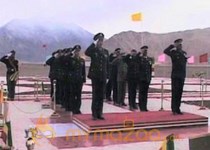It is heartening that New Delhi and Beijing are not allowing the breadth of their engagement to be constrained by the border question, which has not moved closer to resolution since 2005, when the two sides agreed on the Political Parameters and Guiding Principles that would inform an eventual solution.
Since then, "special representatives" of both governments have laboured unsuccessfully to arrive at an "Agreed Framework" for a settlement.
The Border Defence and Cooperation Agreement (BDCA) that was signed on Wednesday as Prime Minister Manmohan Singh visited Beijing takes the two sides no closer to a final settlement. All that it does - like the earlier agreements of 1993, 1996, 2005 and 2012 - is to bolster a relatively benign operating environment on the disputed Line of Actual Control (LAC).
This imposed calm is essential for curbing hotheaded tactical commanders; violence between patrols that come face-to-face in disputed areas can easily blow up into full-scale diplomatic crises.
But the BDCA does nothing to address the root cause of tension on the border: an absence of clarity on where the LAC runs.
With both sides needing to demonstrate physical presence and control up to their claimed LAC, this gives rise to accusations of "patrol intrusions", perceptions of aggression and mal-intent, concomitant insecurity, and the consequential massing of troops that heightens the probability of escalation.
Agreeing on an LAC is far simpler than agreeing on a border. But, so far, India and China have shared perceptions on the LAC only in the inconsequential Central Sector, i.e. Uttarakhand and Himachal Pradesh. In the Western Sector (Ladakh) and Eastern Sector (Sikkim and Arunachal Pradesh), Beijing has resisted the exchange of maps marked with each side's claimed LAC alignment.
It is unclear whether this is because China wants to retain the option to expand its claim later, or because of the apprehension that this would lead to unrealistic claims that would complicate the situation further.
The absence of an agreed LAC blocks many of the measures spelt out in the agreements on confidence-building measures.
The 1996 agreement explicitly states "the full implementation of some of the provisions of the present Agreement will depend on the two sides arriving at a common understanding of the alignment of the line of actual control."
New Delhi must press Beijing to move forward with the map exchange. True, this might result in identifying more areas where the Indian perception of the LAC does not align with that of China.
But pretending that the LAC is disputed in only 14 areas (the currently identified differences) is hardly a substitute for ascertaining the real magnitude of the dispute.
Once the situation is clear, solutions could be tailored to reduce tension over the disputed areas without prejudice to either side's claims.







